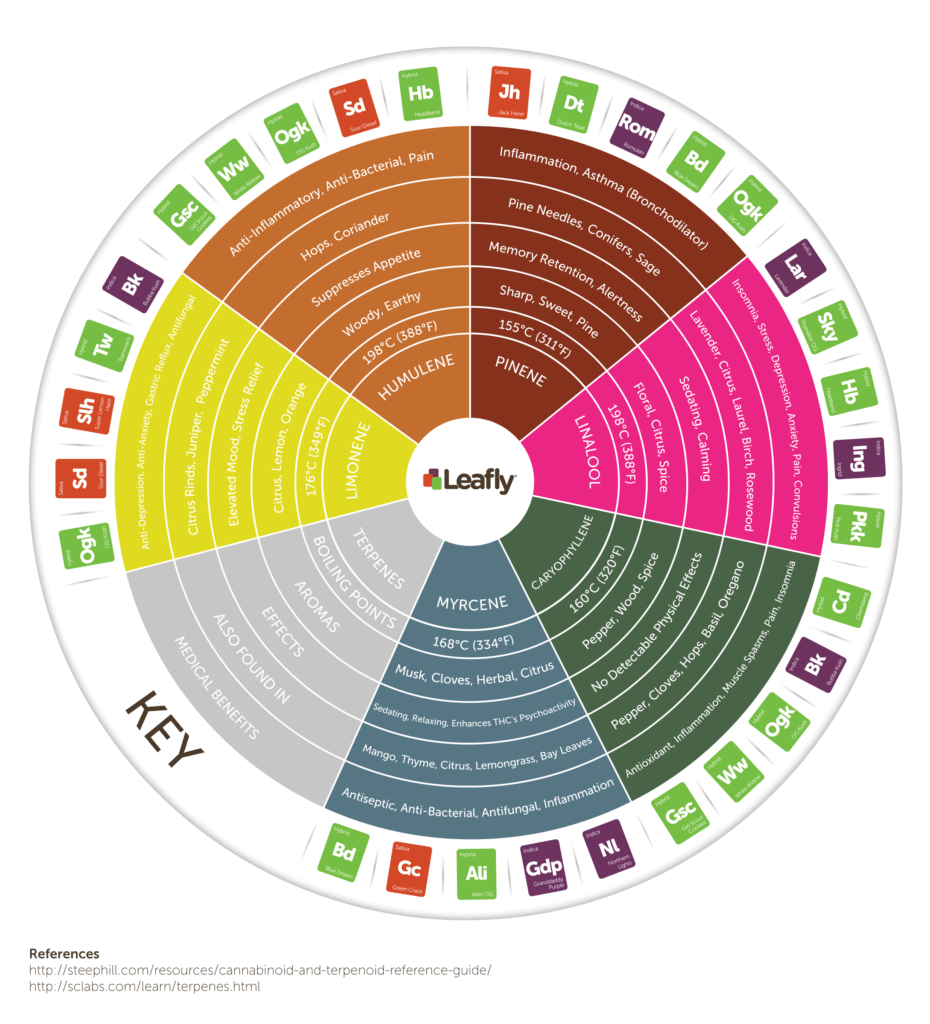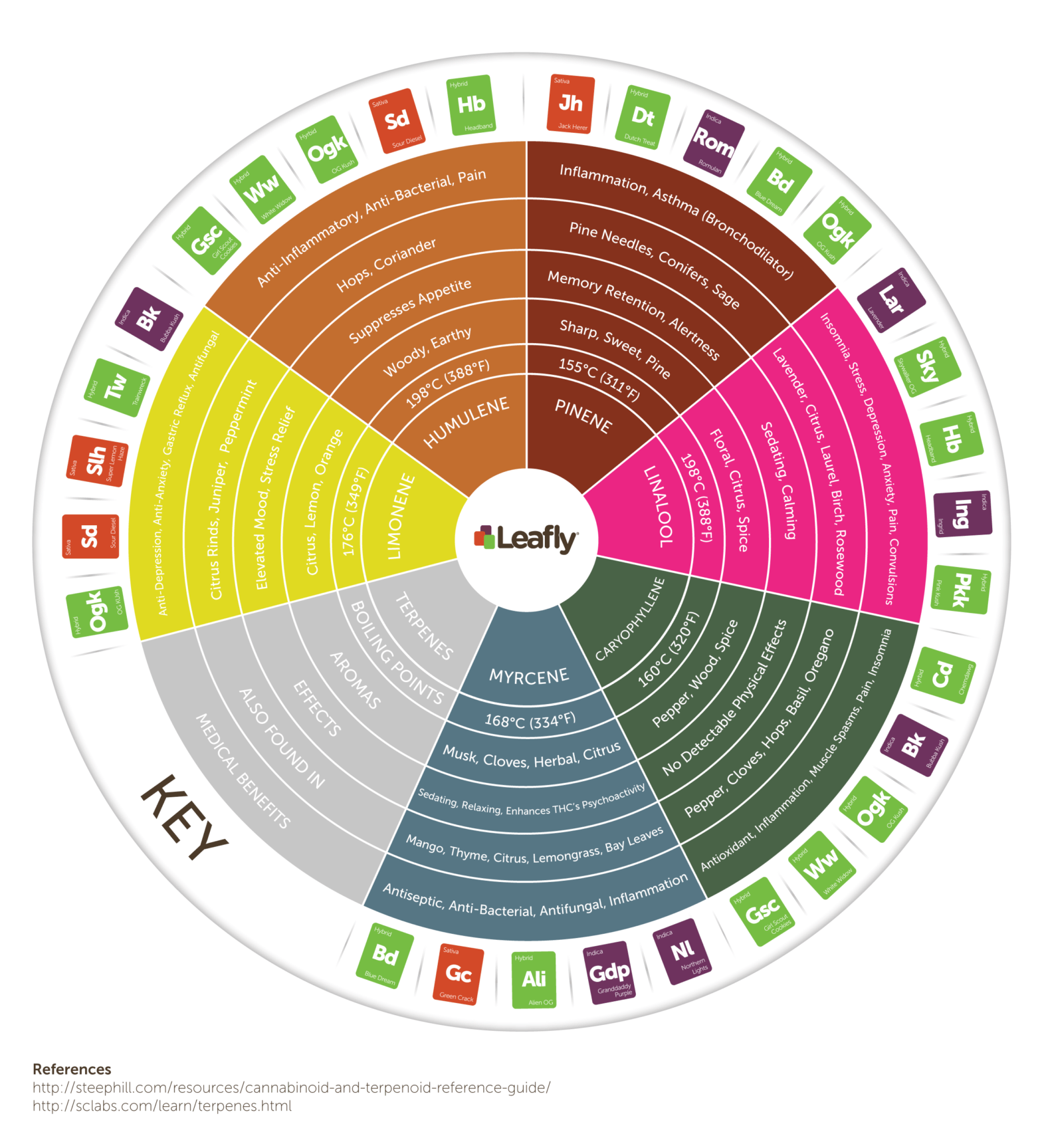Terpenes are inside every plant on the planet. There are at least 20,000 currently identified and it’s believed that there are many more terpenes yet to be cataloged. Every terpene is unique. Some have distinct aromas or flavors, some provide therapeutic effects. Some terpenes are very rare and others are extremely common; some are found in all plants and others are only found in hemp or cannabis.
With so many terpenes to keep track of, and so many different effects and characteristics, a terpene chart provides a great way to digest this complex and tedious information.
What is A Terpene Chart?
A terpene chart is a heuristic tool for understanding the effects, flavors, aromas and/or important information about common terpenes. Usually, terpene charts focus on the terpenes that are commonly found in cannabis or hemp and that can be extracted and used in other products to achieve certain results. Terpene charts typically come in the form of a wheel, but sometimes they come in the form of bar charts.
The one included below, created by Leafly, is a great example of a classic terpene chart.

How Do I Read a Terpene Chart?
Let’s use the same example terpene chart from above. When it comes to reading terpene charts, always start at the key. In the largest quadrants closest to the center, you’ll find the names of six common terpenes found in cannabis and hemp: Humulene, Pinene, Linalool, Caryophyllene, Myrcene and Limonene. In the next quadrant, you’ll find each terpene’s boiling point, then their unique aromas, followed by their specific effects, then what other plant-life these terpenes are found in and what potential therapeutic properties each terpene harnesses.
As you’ll see, Myrcene has a boiling point of 168℃. It’s aromatic profile is described as musk, cloves, herbal, citrus. Leafly’s terpene chart also tells us that Myrcene is thought to have sedative properties and may enhance the psychoactivity of THC (the cannabinoid in cannabis that makes someone feel “high”). Myrcene is found in mango, thyme, citrus, lemongrass and bay leaves and it harnesses potential antiseptic, antifungal and anti-inflammatory benefits.
--
To learn more about the basics on terpenes, head to our blog on Terpenes Explained: Frequently Asked Questions About Terpenes.



